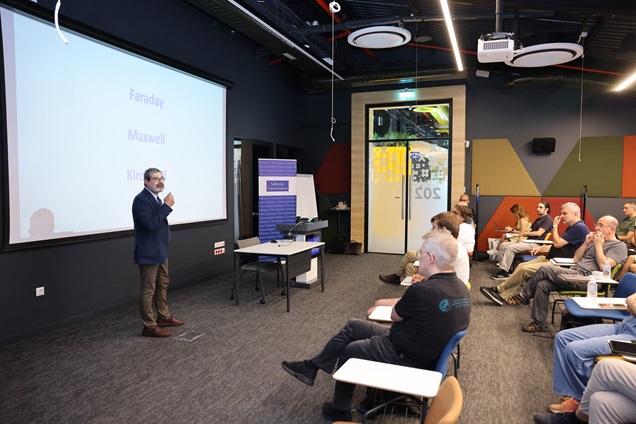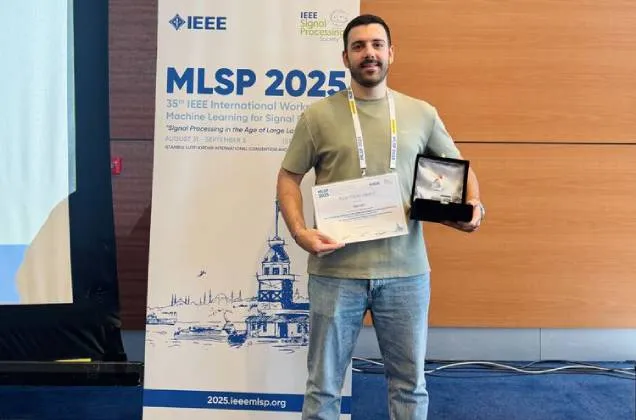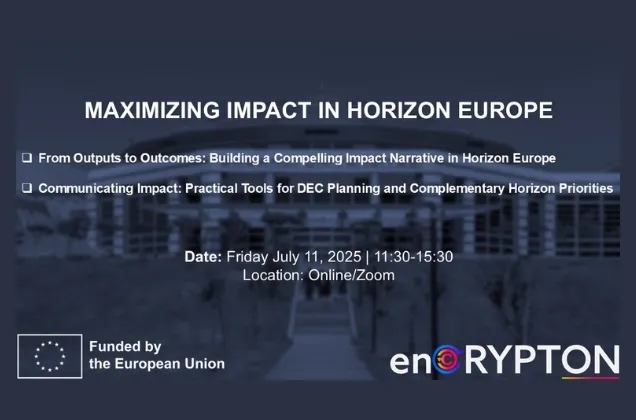20/08/2024
The academic workshop, which covered different topics and perspectives under the scope of Quantum Information and Computation Theory, brought together leading people from various fields to discuss the past, present, and future of quantum technology. Attended by students, faculty members, and industry experts, the workshop provided a platform to provide an in-depth perspective into the complexities and potential of quantum computing.
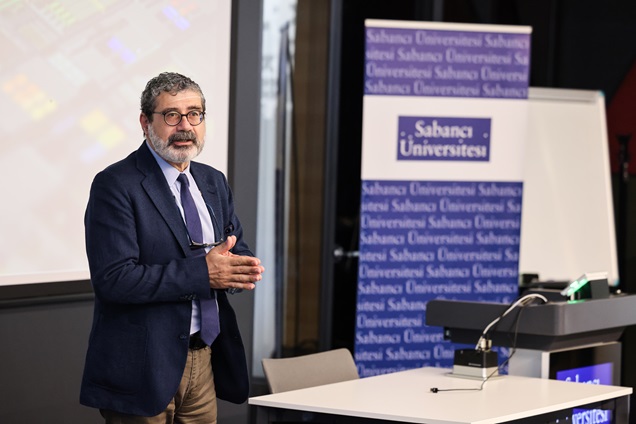
President’s Opening Speech: Quantum is an Enigma
The workshop began with an opening speech by Sabancı University President Yusuf Leblebici, addressing the mysterious nature of quantum technology. The President noted that although quantum principles were established more than a century ago, they are largely unexplored and underutilized in terms of both practical applications and in general.
“Every work we do, including the most complex chip designs, is based on fundamental principles established 200 years ago,” Leblebici said, pointing out the continued reliance on classical principles in modern technology. He added, “The true quantum revolution is not yet complete”, inviting participants to approach quantum mechanics from new perspectives and complete the revolution that began more than a century ago. He then mentioned a short but impressive speech by Carver Mead, a pioneer in the field of “Very Large-Scale Integration” (VLSI) in 2013. In his closing remarks, Yusuf Leblebici reiterated Mead's message calling on the scientific community to "complete the revolution" initiated by quantum pioneers, concluding, "Our duty is to look at these challenges from a new perspective and contribute to the completion of the quantum revolution. I hope that this workshop will spark new ideas and encourage cooperation among the participants," before giving the floor to Sabancı University Vice President Mehmet Yıldız.
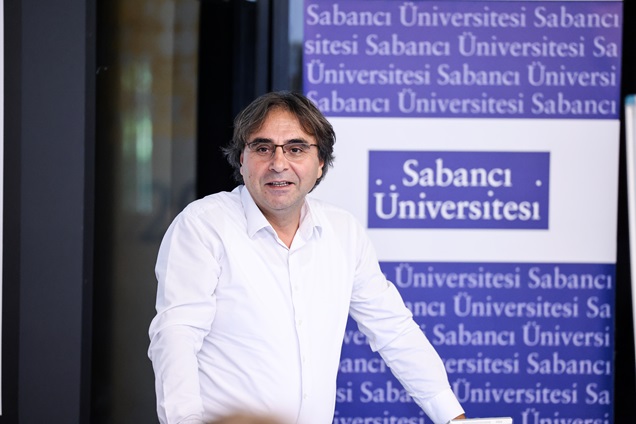
Interdisciplinary Bridges
Following Yusuf Leblebici, Sabancı University Vice President Mehmet Yıldız touched on the importance of interdisciplinary collaboration, stating that quantum computing may seem distant to some, but its principles are increasingly gaining importance in various fields such as mechanical engineering, computational mechanics, and computational fluid dynamics. He said that he hoped the workshop will encourage young scientists to question established ideas and contribute to the spread of quantum technologies to new areas.
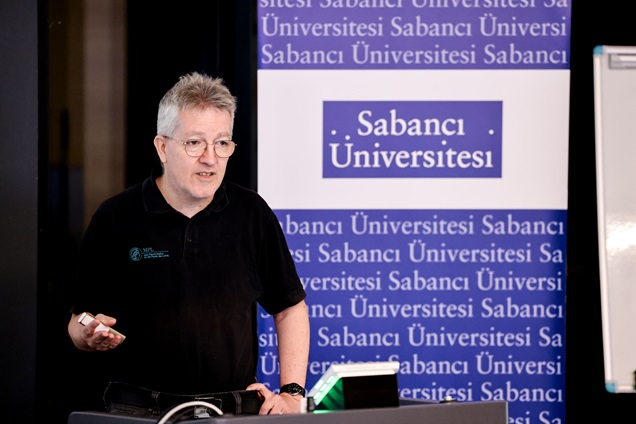
After the opening speeches, the workshop continued with a presentation by Markus Grassl from the International Center for Theory of Quantum Technologies (ICTQT) at the University of Gdansk. Originally a computer scientist, Grassl explained how discrete mathematical methods are important for understanding quantum information theory. His talk focused on the challenges of quantum error correction and preserving quantum integrity. Grassl encouraged participants to engage with the complexities of quantum mechanics and emphasized the importance of curiosity and questioning in moving the field forward.
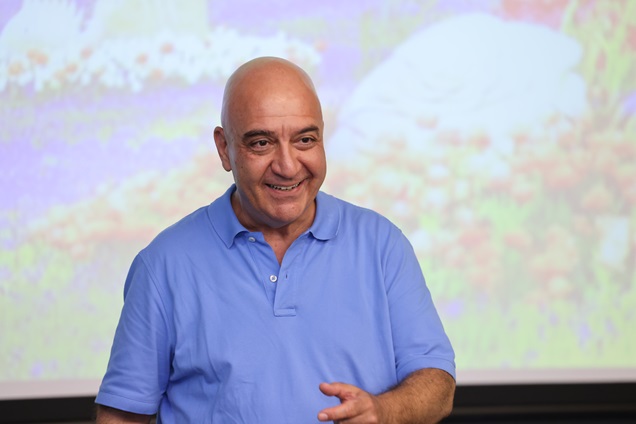
On Quantum Concepts
The second presentation of the workshop was delivered by Sabancı University Faculty of Engineering and Natural Sciences faculty member Zafer Gedik. Making a presentation on ‘Mutually Unbiased Bases and Symmetric Exact Measurements’ from a physicist’s perspective, Gedik examined the concept of ‘mutually unbiased bases’ and their importance in quantum computing. He examined how these mathematical structures are an integral part of making accurate measurements in quantum systems, emphasizing their role in the broader context of quantum information theory. Gedik also touched on the historical development of theorems in quantum computing and the ongoing challenges in fully realizing the potential of quantum communication.
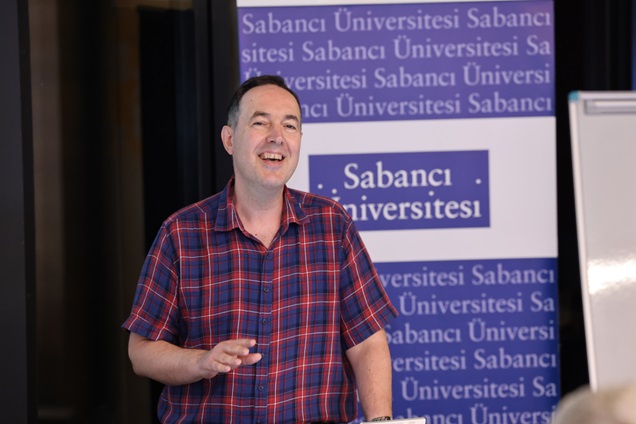
The final presentation of the first part of the workshop was given by Faculty of Engineering and Natural Sciences faculty member Ferruh Özbudak, who added a different perspective to the discussions by emphasizing the importance of coding theory in various fields, including neuroscience. Özbudak shared his experiences with the applications of coding theory, expanding on the importance and versatility of the theory beyond quantum computing. Özbudak’s presentation demonstrated how the basic theories in quantum mechanics can be applied to understand complex systems such as the human brain.
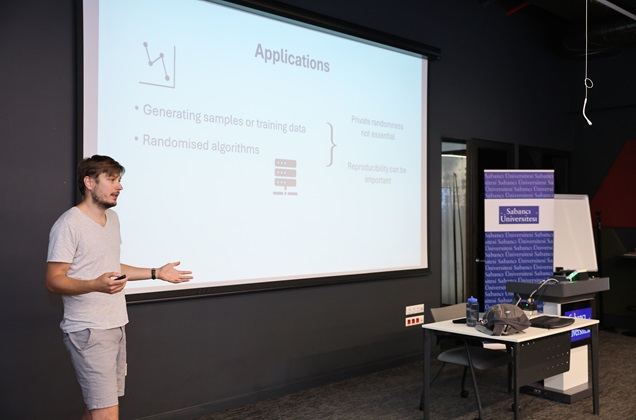
The first speaker to speak in the second part was Máté Farkas from the Department of Mathematics and Quantum Technologies of York University. Farkas impressed the audience with his presentation on generating special randomness using quantum physics. He discussed the theoretical tools available to exploit quantum randomness and shared some of his recent findings that have potential applications in secure communications and cryptography.
Göktuğ Karpat’s Closing Speech: Dynamic Memory in Quantum Processes
The last speaker of the day was Göktuğ Karpat, from the Department of Physics of İzmir University of Economics. Karpat made his presentation on the concept of “dynamic memory in quantum processes.” He explained the difference between static memory channels and more complex dynamic memory that evolves over time. Karpat touched on concepts such as quantum time shifting and quantum switching, and presented examples of research that pushes the boundaries of how quantum evolution is understood. The day-long workshop was attended by many academics and experts, as well as Sabancı University Vice President Cem Güneri.
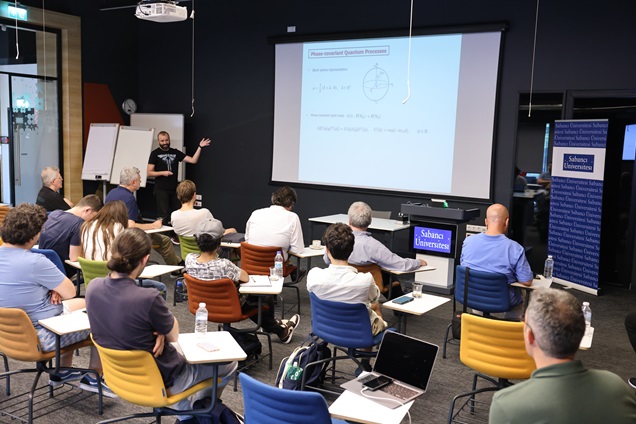
The workshop concluded by calling on the new generation of scientists to embrace the challenges and opportunities offered by quantum technology. The discussions emphasized the importance of interdisciplinary collaboration and the need for continued innovation to unlock the full potential of quantum mechanics.
